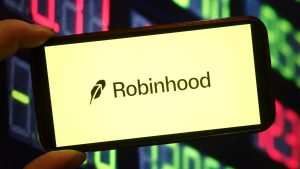If I’d invested £1,000 in National Grid (LSE:NG.) shares a year ago, today my investment would be worth just £924. That’s because the stock’s down 7.6% over the period.
While this doesn’t look like the best of investments, it’s worth remembering that I would have received something like £55 in the form of dividends during the year.
As such, my overall returns would be around -£20.
However, it’s more important to look forward rather than backwards when investing. So let’s take a closer look at the FTSE 100 stock.
Sliding into May
National Grid shares slumped in May as it announced it would be raising £7bn through a rights issue to support its future investments.
The rights issue means that the share count will increase by 29%, diluting future earnings and dividends. It’s essentially spreading the company’s returns more thinly among shareholders.
For those of us who always saw the National Grid as a plodding dividend stock, the rights issue represents something of a change.
After all, management isn’t undertaking a rights issue to the detriment of shareholders. It believes this is the best way to take the company forward and plans to invest £60bn before the end of the decade.
CEO John Pettigrew confirmed: “We will be investing £60bn in the five years to the end of March 2029 – that’s nearly double the level of investment of the past five years.“
So many investors will see this as a double-edged sword. Shares are being diluted, but the company has more funds to invest in its future.
What the City says
If I haven’t covered a stock before, I often look at consensus opinion of major brokerages covering the stock. And in this case, the outlook appears to be pretty positive.
The National Grid has five ‘buy’ ratings, six ‘outperform’ ratings, and four ‘hold’ ratings. Importantly, there are no ‘sell’ or ‘underperform’ ratings.
Another positive is that the average share price target is 24.5% above the current share price, at the time of writing.
However, it’s worth noting that the average share price target has also fallen since the rights issue was announced. And as analysts don’t update their ratings continuously, it’s possible that the average target could fall further in the coming weeks as analysts revisit the stock.
My take
It’s always challenging to assess how much a stock should be worth when it’s about to undertake a costly investment programme, especially when there’s already a lot of debt on the balance sheet.
Just look at BT. The telecoms giant has spent a fortune investing in fibre-to-the-premises, and even as the programme draws to a close, analysts are still debating what fair value actually looks like for the stock.
Personally, I’m keeping my powder dry. There may be a good risk/reward playoff here for some investors but, for now, I’ll just observe.
This post was originally published on Motley Fool





